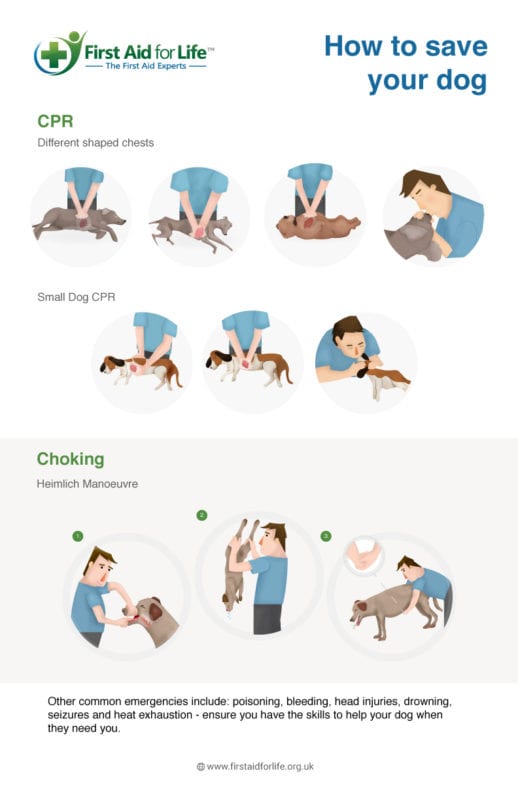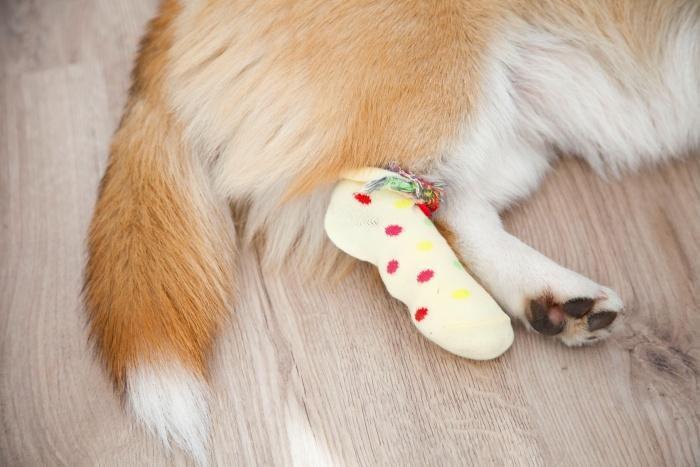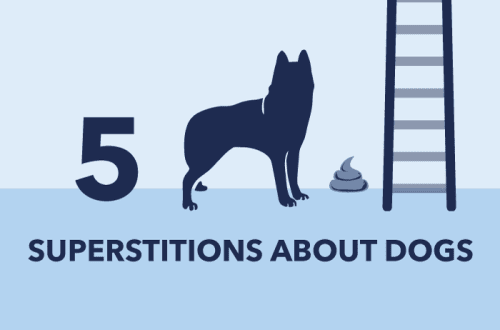
Dog injuries and first aid
The word “injury” is translated from Greek as “damage”. This is the impact on the body of environmental factors that cause functional and morphological disorders in organs and tissues, accompanied by the development of local and general protective reactions of the body.
What are injuries in dogs?
| Types of injuries | appear as a result of: | They appear as: |
| Mechanical | impact on organs and tissues of mechanical force: a fall of a dog, a collision with a car, cuts, etc. | compression, bruise, rupture, crush, fracture, sprain, wound. |
| Physical | exposure to temperature (too high or low), electric current, radiation (radioactive or x-ray), ultraviolet light. | burns, radiation sickness, frostbite. |
| chemical | effects on the body of alkalis, acids, salts of heavy metals, toxic substances. | chemical burns, but there is also a general poisoning of the body during the absorption of toxic substances. |
| Biological | exposure to microorganisms (fungi, viruses, bacteria), parasites and their toxins. | |
| Mental | severe stress, fright, containment violations, adverse climatic conditions, improper transportation, etc. | In severe cases, they lead to shock and even death of the dog. |
| Mixed | several traumatic factors. For example, the bite of a venomous snake or an infectious lesion of an open wound. | Mixed injuries can be more dangerous than single ones. |
Depending on the character:
- Open (damaged skin or mucous membranes).
- Closed (without violating the integrity of the skin or mucous membranes).
First aid for dog injuries
Fracture – complete or partial violation of the anatomical integrity of the bone, accompanied by damage to the soft tissues surrounding the bone and impaired function of the injured limb. May occur as a result of a fall from a height, an unsuccessful jump, excessive stress on the bone. Most often, the limbs suffer Your actions:1. Apply a fixed bandage and splint to the fracture site. To do this, you can use pieces of durable cardboard, elastic stems, or straight, strong wood rods. The splint should be of such length that it can capture one joint above the fracture and one joint below the fracture.2. Secure the splint with a bandage or tight bandage.3. If, after applying the bandage, you notice that the lower part of the dog’s limb is swollen and increased in volume, the bandage must be slightly loosened.
The bandage should be both tight, but not obstructing normal blood circulation in the limbs of the dog.
4. Contact your veterinarian as soon as possible. Injury – this is a closed damage to organs and tissues without violating the integrity of the skin or mucous membranes. A bruise in a dog can occur from a blow. It is very easy to damage the muscles, liver, spleen, kidneys, blood vessels. Your actions:
- Keep your dog calm.
- Apply a tight, tight bandage with a bandage.
- You can also use cold compresses and lotions, and apply ice if possible. However, this must be done in the first 2 days.
- Contact your veterinarian as soon as possible.
squeezing occurs as a result of prolonged exposure to traumatic factors, for example, an accident in a room, a railway accident, etc. As a rule, this is accompanied by shock, exsanguination of compressed tissues, and the development of necrosis. The load on the kidneys and heart increases. Your actions:
- Apply cold to the crushed limb.
- Apply protective tourniquets to the compressed limb above the compression site until they are released.
- Immediately after release, tightly bandage the injured limb. Put on tires and apply cold.
- Get your dog to the vet as soon as possible.
First, apply protective tourniquets, only then release the squeezed limb.
Stretching – this is a violation of the integrity of individual ligaments, small vessels or fibers without visible damage. When ruptured, visible damage is added.Your actions:one. Keep your dog calm.1. Apply a tight pressure bandage to the injured area. Make sure that the blood flow in the dog’s limbs is not disturbed. 2. Contact your veterinarian as soon as possible. Shake occurs when exposed to an air wave as a result of an explosion, earthquake or high-frequency vibrations. Blood pressure drops sharply, shock may occur. Your actions:
- Keep your dog calm and restrict movement.
- Contact your veterinarian immediately.
dislocation – this is a violation of the integrity and conformity of the articular surfaces of the bones. Can be obtained as a result of a fall, impact, unsuccessful jump. Your actions:
- Keep your dog calm and limit movement.
- Contact your veterinarian immediately.
- It is necessary to restore the natural position in the articulation of the displaced bones. And the sooner such assistance is provided, the better.






